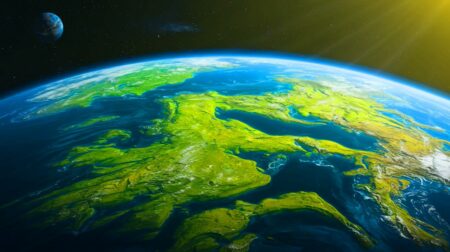| IN A NUTSHELL |
|
For years, the presence of water on the moon has puzzled scientists. Despite its dry, airless surface, the moon harbors this vital resource, sparking curiosity about its origins. While theories have ranged from icy comets to ancient buried reserves, a groundbreaking NASA study has unveiled a surprising source: the sun’s solar wind. This revelation not only supports long-held hypotheses but also holds significant implications for future lunar exploration. By understanding the processes that create water on the moon, scientists can better plan for sustainable human missions, potentially utilizing the moon’s natural resources to support life beyond Earth.
Custom Lab Setup Mimics Lunar Environment
NASA’s innovative experiment, led by research scientist Li Hsia Yeo at the Goddard Space Flight Center, marks a pivotal achievement in lunar studies. The team meticulously designed a custom lab setup that replicated the moon’s harsh environment. Collaborating with Jason McLain, Yeo developed a unique chamber equipped with a solar particle beam, vacuum conditions, and a molecule detector. This setup aimed to simulate the moon’s exposure to solar wind over an equivalent of 80,000 years in just a few days.
Scientists create heat-resistant super corals that could save entire marine ecosystems from collapse
Using lunar dust samples from the historic Apollo 17 mission, the experiment eliminated contamination by baking the samples to remove moisture. When exposed to the simulated solar wind, the results confirmed the long-standing theory that solar particles could be a key ingredient in generating water on the moon. McLain emphasized the importance of this breakthrough, noting that the experiment not only validated decades of hypotheses but also opened new avenues for understanding lunar resources.
Sunlight-Triggered Chemistry Hints at Moon’s Water Cycle
The chemistry behind the formation of water on the moon involves the interaction between solar wind protons and the lunar surface. As these protons, which are essentially hydrogen nuclei, strike the moon, they encounter little resistance due to the lack of a magnetic field or atmosphere. This interaction leads to the formation of hydrogen atoms, which then combine with oxygen in lunar minerals to create hydroxyl and water molecules.
Scientists create heat-resistant super corals that could save entire marine ecosystems from collapse
The research team utilized a spectrometer to observe changes in the chemical composition of the lunar dust. They detected a reduction in infrared light absorption, a telltale sign of water presence. Although the exact formation of pure water couldn’t be confirmed, the data strongly indicated the production of hydroxyl and water molecules. Yeo highlighted the significance of these findings, emphasizing the potential to create water using only lunar soil and solar hydrogen, a concept that could revolutionize lunar exploration.
Implications for Artemis and Search for Lunar Water
The insights gained from this study have profound implications for NASA’s Artemis program, which aims to return astronauts to the moon, particularly targeting the South Pole where frozen water is believed to exist. The research suggests that water formation on the moon may be an ongoing process, driven by the solar wind. Observations have shown that the spectral signal associated with water varies throughout the lunar day, intensifying in the cooler morning and diminishing as the surface warms.
This dynamic process highlights the potential for a sustainable water cycle on the moon, offering promising opportunities for future missions. By understanding the mechanisms behind water creation, scientists can develop strategies to harvest and utilize this resource, supporting longer and more self-sufficient lunar expeditions. As the Artemis program progresses, the role of solar wind in water formation will be a critical factor in planning and executing missions aimed at establishing a human presence on the moon.
As new research continues to unveil the mysteries of lunar water, the potential for using the moon’s resources grows ever more promising. The discovery that solar wind plays a crucial role challenges previous assumptions about water sources on the moon. By leveraging the sun’s natural processes, humanity may one day establish a sustainable presence on the lunar surface. How might these findings influence future exploration and the quest for water beyond Earth?
Did you like it? 4.3/5 (24)









This is mind-blowing! 🌕 Does this mean we could live on the moon one day? 🚀